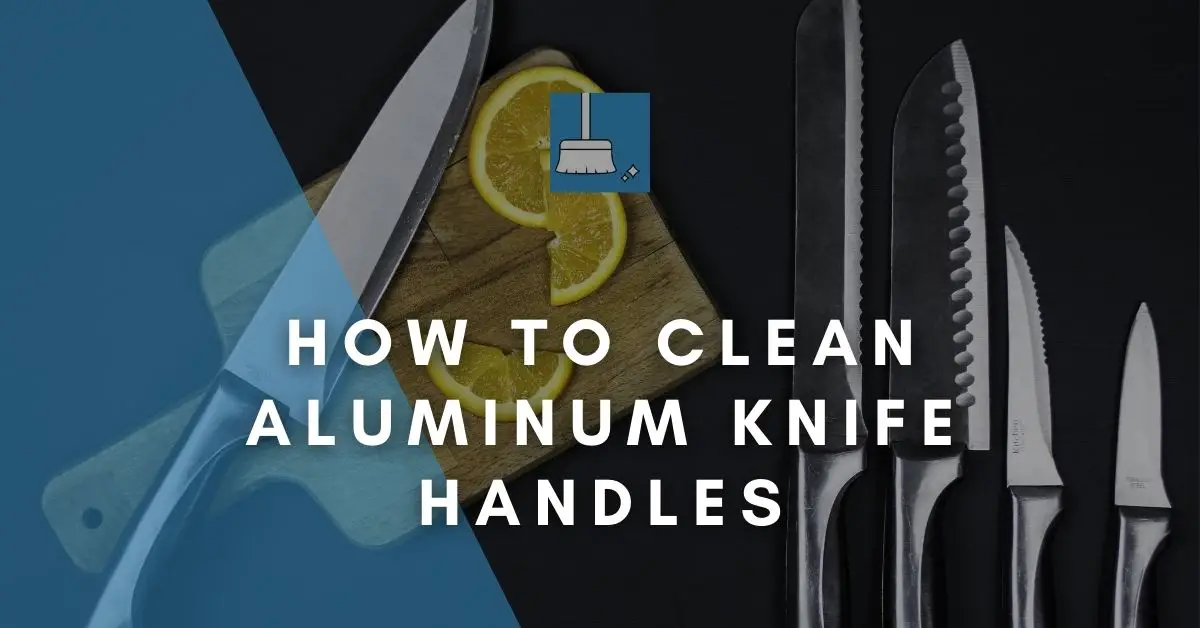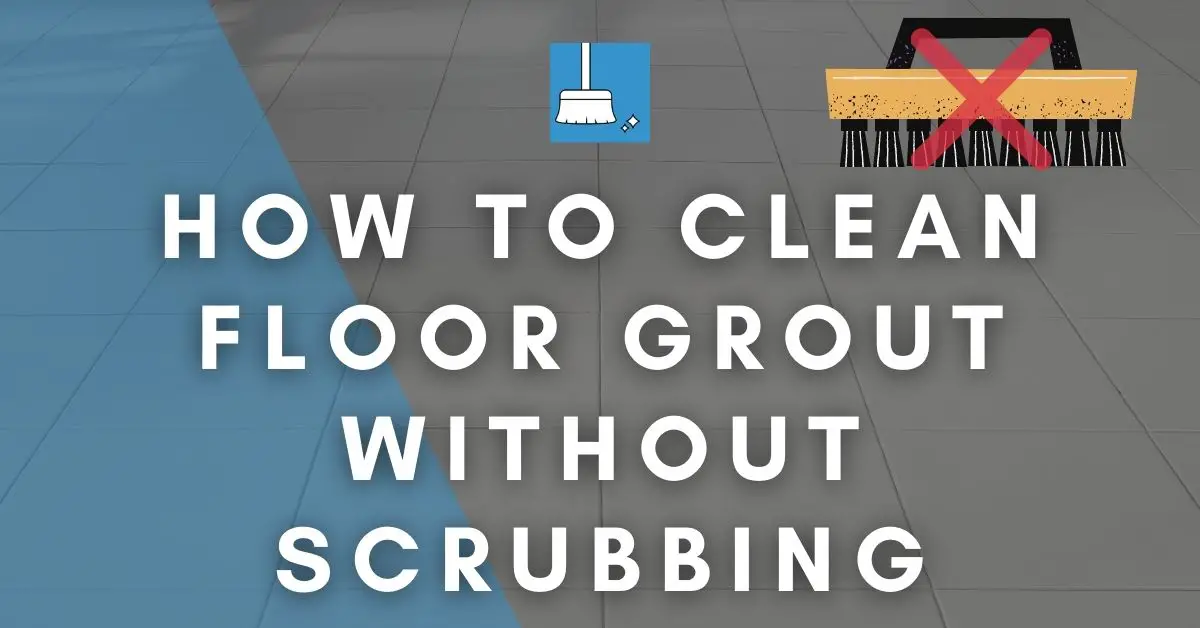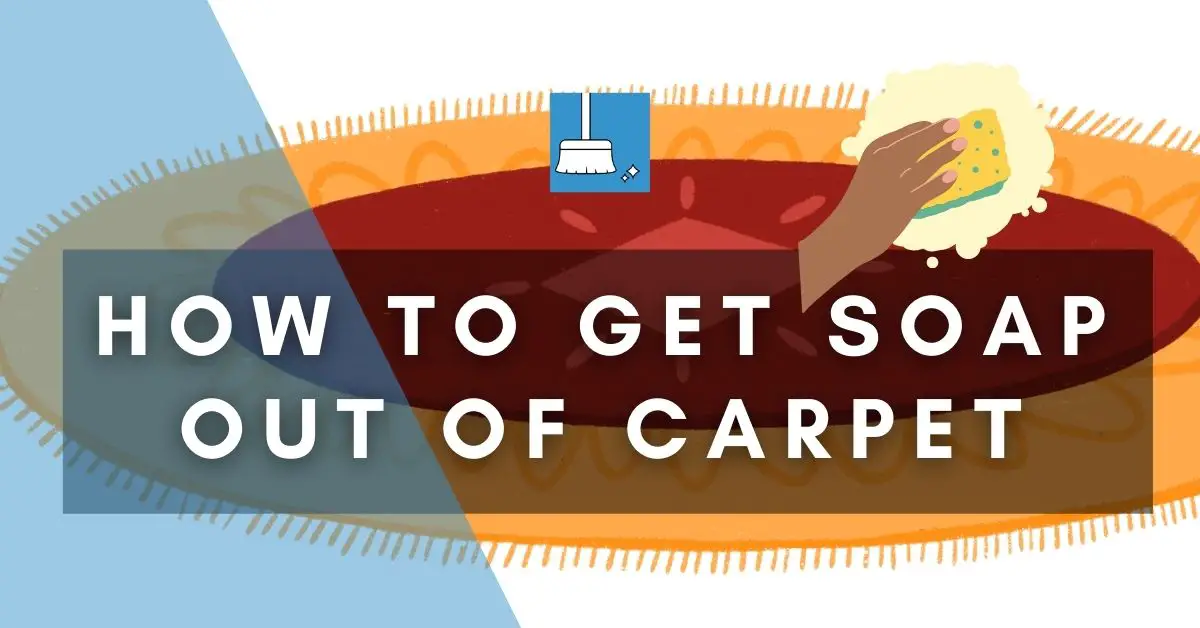Although Aluminum knives are popular among chefs and consumers, due to their affordability and resistance to corrosion and rusting, they do need to be cleaned with the right methods.
However, over time, the aluminum handles lose their beautiful silver shine and become grey or blackened. This is due to the aluminum reacting with the oxygen in the air and producing aluminum oxide (it appears as grey or black deposits on the handle).
This process is natural, and the oxide is easy to remove with the methods and materials laid out in this article.
How to Clean Aluminum Knife Handles (4 Methods)
Method 1: Using Dish Soap
Use this method for regular, everyday cleaning of your Aluminum knives.
YOU’LL NEED
1- Hot/warm water
2- Mild dishwashing liquid (the same one as you use to wash your dishes)
3- Sponge
4- Rubber gloves (optional)
5- Cotton dishtowel or microfiber towel
STEPS
STEP 1: Rinse any remaining food particles off the surface of the knife and handle under the tap.
STEP 2: Squirt a small amount of dishwashing soap onto the sponge and use it to wash the knife handle first, using small circular movements.
Be sure to wash all the surfaces of the handle before rinsing the soap from it. When washing your knives point the tip of the blade away from you.
STEP 3: Wash the blade of the knife using the same method detailed in Step 2 of this method.
STEP 4: Dry the handle of your knife with the towel, first, then fold the towel over the blade (with the tip of the knife pointing away from you) and wipe it (with a little pressure) from the hilt to the point of the blade, to dry it.
Method 2: By Boiling
Use this method to remove discoloration and stains from aluminum knife handles through boiling. Use this method to clean more than one knife in one go.
YOU’LL NEED
1- Hot/warm water
2- Mild dishwashing liquid (the same one as you use to wash your dishes)
3- Sponge
4- Rubber gloves (optional)
5- Large aluminum or stainless steel pot
6- Mild acid of your choice: Lemon juice or cream of tartar or white distilled vinegar
7- Cotton dishtowel or microfiber towel
STEPS
STEP 1: Wash your knives thoroughly by hand, under a running tap, to remove all the grime and grease.
STEP 2: Place the knives into the pot. Half fill the pot with water and add the 2 tablespoons of the mild acid of your choice (lemon juice, cream of tartar, or white vinegar) for every liter of water in the pot.
STEP 3: Place the pot on the stove and bring the solution to a boil before allowing it to simmer for 10 to 15 minutes.
STEP 4: Allow the knives and the solution to cool, before pouring out the water and rinsing and drying the knives. This is due to aluminum being an excellent conductor of heat.
It expands in high temperatures and shrinks in cold temperatures and thus is sensitive to warping during extreme temperature changes.
Method 3: Using an Acidic Paste/Solution
Use this method to remove discoloration and stains from aluminum knife handles by using a mildly acidic solution or paste.
YOU’LL NEED
1- Warm water
2- Cream of tartar or white distilled vinegar
3- Clean cloth
STEPS
STEP 1: Clean the knife handle and blade thoroughly with your hand, by washing it under a running tap, to remove all the grime, grease, and food particles.
STEP 2: Make a paste with 2 tablespoons of cream of tartar powder and 1 tablespoon of water. Alternatively, make a solution of vinegar and water using a ratio of 1:1.
STEP 3: Dip the cloth into the solution or paste and apply it to the handle evenly. Allow the paste or solution to soak into the handle for 3 – 5 minutes, before scrubbing it gently with the cloth.
STEP 4: Rinse the solution or paste from the knife, then wash and dry as normal.
Method 4: Using Barkeepers Friend & Polish
Use Barkeepers Friend Cleanser and Polish to remove discoloration and stains from aluminum knife handles.
YOU’LL NEED
1- A sachet or canister of Barkeepers Friend Cleanser and Polish
2- Thick glove or towel
3- Microfiber cloth
STEPS
STEP 1: Make sure the knife is cleaned thoroughly (by washing it under a running tap) before beginning the process.
STEP 2: Wet a cloth and sprinkle a small amount of the cleanser onto the cloth.
STEP 3: Protect your hand (that will hold the blade of the knife) by wearing a glove or wrapping the blade in a towel.
STEP 4: Wrap the cloth around the knife handle and twist the cloth around the handle in both directions.
STEP 5: Rinse away the remaining cleanser from the knife.
STEP 6: Repeat the process until you are satisfied with the color and shine of the aluminum knife handle.
Do’s and Don’ts of cleaning Aluminum Knife Handles
Do’s
1- Wash or rinse knives immediately after use to prevent any food materials from drying and sticking to the knife’s surface as this makes it harder to clean.
2- Wash each knife separately (except when boiling), using rubber gloves for added grip and decreased risk of nicks and cuts, as aluminum is slippery when wet.
3- Using a mildly acidic solution is desirable as the solution works quickly and effectively to remove discoloration from the knife handle while preserving the integrity of the metal handle. The materials are also easy to obtain and are non-toxic.
4- Apply the cleaner to the sponge or cloth and not directly to the handle to ensure even application.
Don’ts
1- Putting Knives in the dishwasher can damage them due to high temperature and harsh chemicals.
The dishwasher also speeds up the oxidation reaction and therefore the discoloration on the handles.
2- Do not use abrasive or harsh cleaners, scourers, or steel wool when cleaning your knife handles as this can cause scratches in the aluminum of the handle. Although steel should be avoided on aluminum surfaces, people use it for polishing aluminum anyways.
3- Do not oil the handle of the knife, as it is unnecessary for aluminum handles and will cause them to become slippery and greasy.
Aluminum Knife Handles – Maintenance Tips

1- Storing your knives in a knife block, or by using a magnetic strip is ideal because it prevents the scratches to the handle that could occur if the knife was jostling against other utensils in a drawer.
2- Knives should be dried immediately after washing, to prevent water stains from forming on the aluminum handle.
3- The handle of the knife should be dried before the blade, to provide a better grip and thus increased safety when drying the blade.
4- Knives and cutlery often get tarnished. Place a crumpled aluminum foil in the cutlery basket of the dishwasher when running normal cycles. This will help remove that tarnish off the cutlery.
Conclusion
Knives, which are the backbone of any chef cannot be ignored, especially if made of aluminum. Regular cleaning using the correct methods is the best way to care for your knives.






Pingback: Can You Put Knives In Dishwasher? (Explained) + More! »